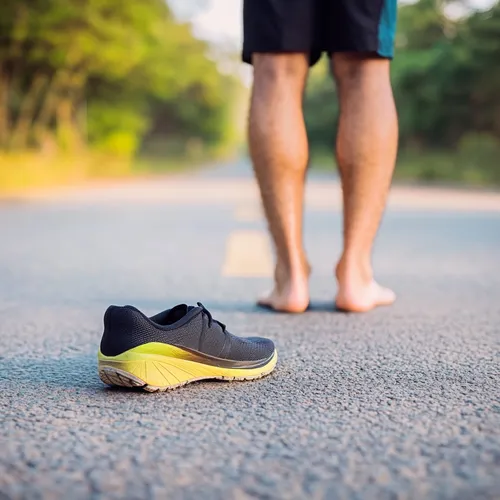Ever had that annoying itch between your toes that just won’t quit? Chances are, you’ve had a run-in with athlete’s foot. Don’t let the name fool you – you don’t need to be an Olympic sprinter to catch this pesky problem. Let’s dive into the world of this common fungal infection and learn how to give it the boot!
What’s the Deal with Athlete’s Foot?
Athlete’s foot, or tinea pedis if you’re feeling fancy, is like that uninvited guest at a party – it shows up when you least expect it and overstays its welcome. This fungal infection loves to set up shop on your feet, especially between your toes where it’s warm and cozy.
Here’s a fun fact: a whopping 70% of people will get athlete’s foot at some point in their lives. That’s right, you’re not alone in this itchy adventure!
Spot the Signs: Is It Athlete’s Foot?
So, how do you know if you’ve got this fungal freeloader? Keep an eye out for these telltale signs:
- A red, scaly rash that’s itchier than a wool sweater in summer
- Skin that’s cracking and peeling like old paint
- Inflammation that makes your foot look like it’s been to an all-you-can-eat buffet
- Blisters or ulcers (in more severe cases)
The infection usually starts its party between your toes but can spread to other parts of your foot faster than gossip at a high school reunion. And if it reaches your toenails? Oof, that’s when things get really tricky.
The Usual Suspects: What Causes Athlete’s Foot?
Athlete’s foot is caused by a sneaky little fungus that thrives in warm, damp environments. Sound familiar? Yep, that’s pretty much the inside of your shoe after a long day or a sweaty workout.
These fungi are like tiny hitchhikers – they can hop from person to person through direct contact or by hanging out on contaminated surfaces. So, next time you’re walking barefoot in the gym locker room, remember: you might be picking up more than just a shower flip-flop tan line!
Are You at Risk? The Fungal Foot Lottery
While anyone can hit the athlete’s foot jackpot, some factors stack the odds against you:
- Wearing damp socks or tight shoes (fungus loves a good sauna)
- Sharing towels or floors with an infected person (sharing isn’t always caring)
- Walking barefoot in public areas (fungus doesn’t discriminate between feet)
- Having a weakened immune system (your body’s bouncers are off duty)
- Diabetes (sugar isn’t just sweet for you, fungi love it too)
Spreading the Love: Is Athlete’s Foot Contagious?
You bet your socks it is! Athlete’s foot can spread faster than a viral video. A single flake of infected skin can turn into a full-blown fungal fiesta if it finds a new foot to call home.
It’s not just about foot-to-foot contact either. Sharing towels, bed sheets, or even shoes can be like sending out invitations to the fungus ball. So, keep your feet to yourself and your stuff off-limits!
Diagnosing the Fungal Fiend
If you suspect you’ve got athlete’s foot, a trip to the doc might be in order. They’ll take a look at your feet and might even scrape off a bit of skin to send to the lab. Don’t worry, it’s not as scary as it sounds – they’re just making sure they know exactly what type of fungi they’re dealing with.
Kicking Athlete’s Foot to the Curb: Treatment Options
Ready to show that fungus who’s boss? Here’s how:
- Over-the-counter antifungal creams are your first line of defense. Look for ones containing clotrimazole – it’s like kryptonite for fungi.
- Keep at it! Even after the symptoms clear up, continue treatment for two weeks. You want to make sure those fungi are really gone, not just hiding.
- If OTC treatments aren’t cutting it, or if you have diabetes, it’s time to call in the big guns. Your doctor might prescribe stronger antifungal medications or even oral tablets for stubborn cases.
An Ounce of Prevention: Keeping Athlete’s Foot at Bay
Want to avoid the whole fungal foot fiasco altogether? Try these tips:
- Keep your feet drier than a stand-up comedian’s sense of humor
- Give your shoes a break – alternate pairs to let them dry out
- Opt for breathable footwear – your feet should feel the breeze, not the squeeze
- Never share socks, shoes, or towels – keep your fungus to yourself, thank you very much
- Wear flip-flops in public showers – think of them as your feet’s personal bodyguards
The Long and Short of It: Long-term Effects
If left untreated, athlete’s foot can be more persistent than a telemarketer. It might spread to your toenails, making them look like they’ve been through a hammer factory. Even worse, it could lead to a bacterial infection called cellulitis – and trust me, that’s not a party you want to attend.
So, don’t let athlete’s foot get comfortable. Tackle it early, treat it thoroughly, and keep those toes happy and fungus-free!
Remember, your feet carry you through life – so treat them right, and they’ll keep you dancing (fungus-free) through your days!
Photo “Athlete’s Foot” by Anthony Cunningham for Zoom Health
Zoom Health is a leading UK supplier of Home Health Tests and Earplugs





